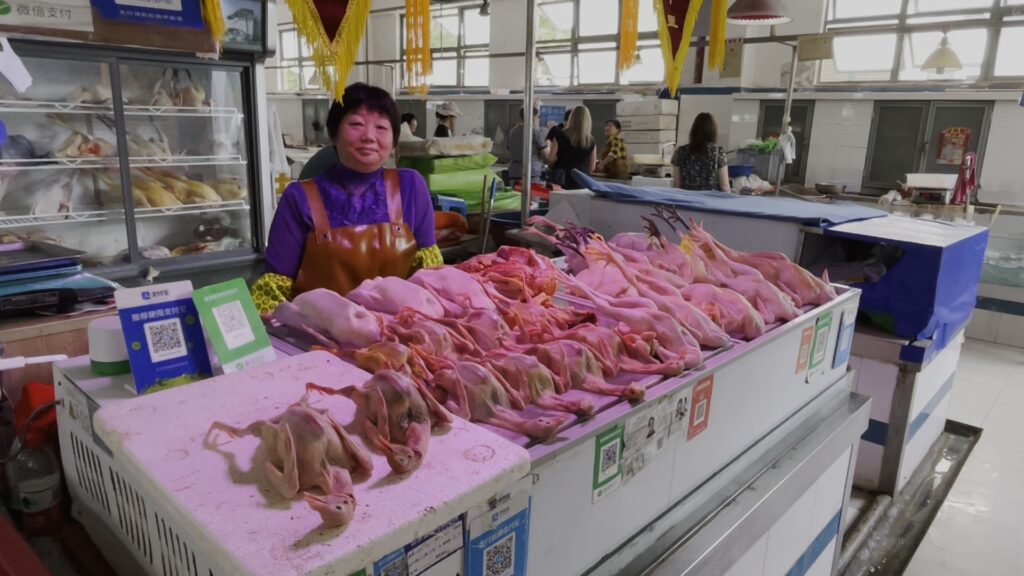A traditional food wet-market is a marketplace in China that sells fresh foods such as meat, fish, fruit and vegetables.
This type of marketplace is a declining retail trend in China as new retail channels such as online shopping and supermarkets grow their market share in the country.
Agriland is in Shanghai, China, as part of the Bord Bia trade mission led by the Minister for Agriculture, Food and the Marine, Charlie McConalogue.
As part of a retail expedition around Shanghai today (Tuesday, May 16) Agriland paid a visit to a wet market to get a better understanding of how it operates and what products are on offer there.
The markets tend to do most of their trade early in the morning and everything from fish turtles, toads and eel, to chicken feet, cattle stomach, beef tongue and pigs tails are all in demand at these wet markets.
Much of the produce is presented very differently here to conventional supermarkets with most poultry sold with heads and feet still on the carcasses.
There were over 100 stalls at this particular wet market and each stall had something slightly different or unique to sell.






The customer base is primarily local residents who buy the contents for their meals at these venues.
However, the marketplace is becoming less popular with middle-income young people in cities, many of whom now prefer to do their grocery shop online or at a supermarket.
Most of the foods on offer at the wet market were raw and the customer generally buys their required produce and cooks it at home themselves.

New retail trends such as bulk buying at the exclusive high-end retailer, Sam’s Place, is becoming more popular with more well-off Chinese residents and this, along with other supermarkets and online food stores, are gaining market share from these traditional wet markets.
Stay tuned to Agriland for further updates from the trade mission to China.
